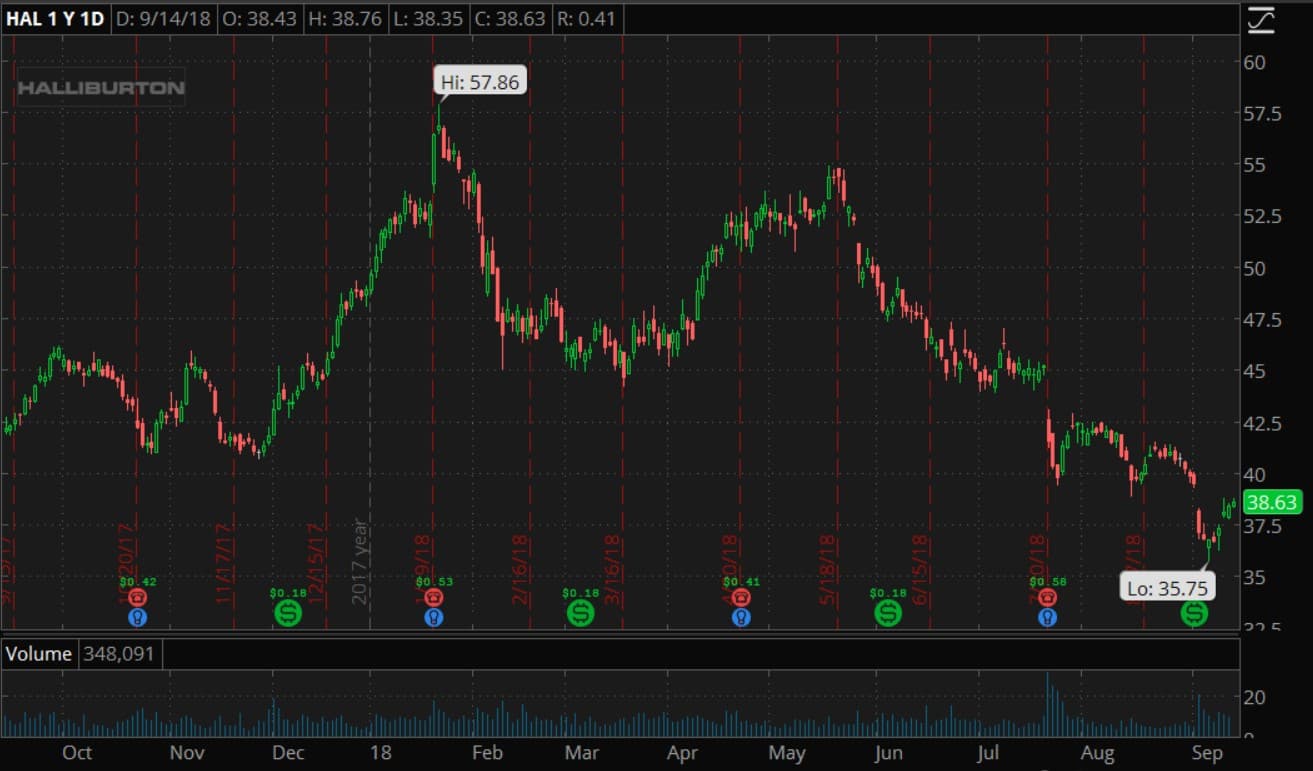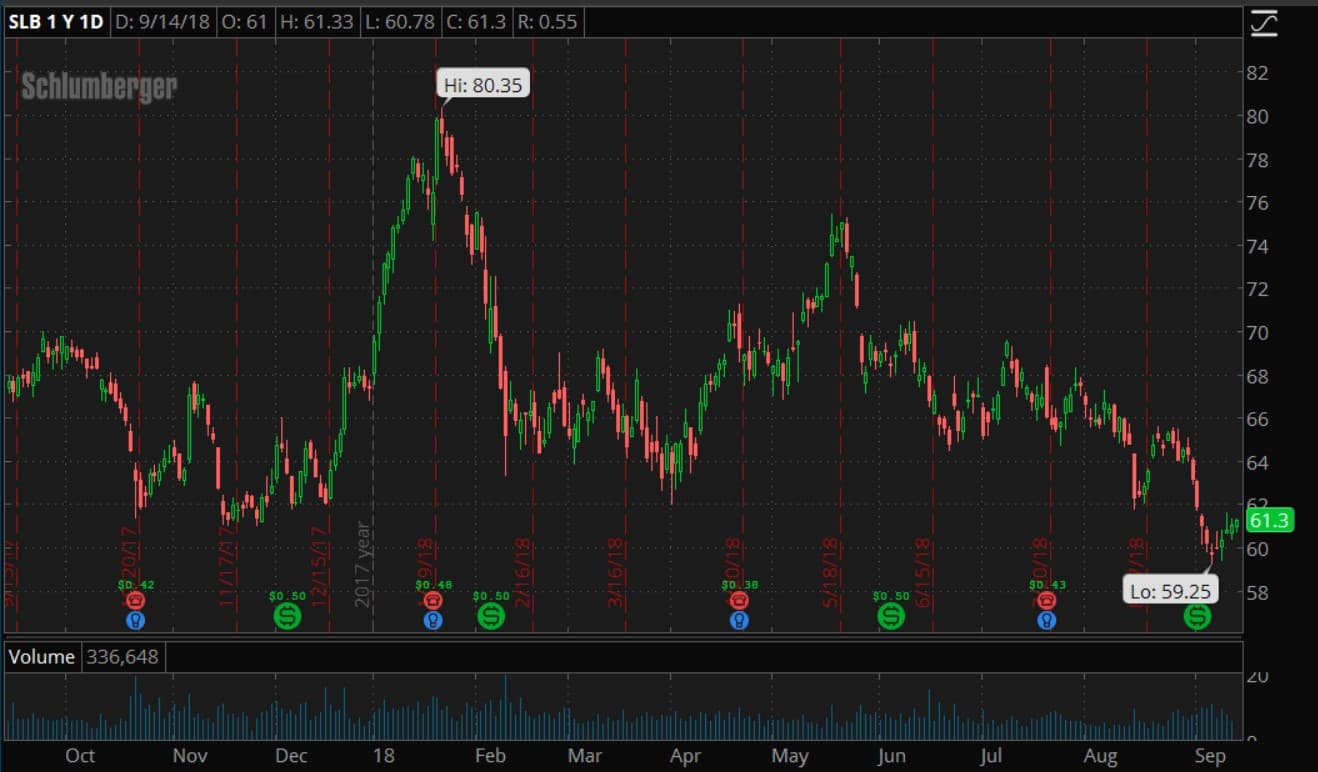If you’ll forgive the pun, oilfield service stocks are a well to which I have returned a couple of times this year, and with results that have so far been well short of spectacular. Still, based on some recent data and the fact that there are signs of life in the moribund industry, I am quite prepared to admit that and go there again.
As a young man in a London dealing room, I was taught early that long-term success in financial markets was in large part about understanding and controlling your emotions. There are, I was told, two main ways to do that. You must avoid being tempted into bad decisions by the euphoria and despair that often come from running a position by setting parameters for every trade and, more importantly, sticking to them. Secondly, you have to forget what happened the last time you tried a similar trade, good or bad, and assess each situation based on available data and market dynamics.
The first of those rules means that even though I have seen a possible revival in oilfield service stocks too early on a couple of occasions, stop loss orders have kept losses to manageable levels. The second means that despite that experience I cannot ignore the possibilities that now present themselves.
(Click to enlarge)
(Click to enlarge)
As you can see, the stock in the industry’s two main players, Haliburton (HAL) and Schlumberger (SLB) have followed similar paths over the last year. At the beginning of 2018, optimism over…
If you’ll forgive the pun, oilfield service stocks are a well to which I have returned a couple of times this year, and with results that have so far been well short of spectacular. Still, based on some recent data and the fact that there are signs of life in the moribund industry, I am quite prepared to admit that and go there again.
As a young man in a London dealing room, I was taught early that long-term success in financial markets was in large part about understanding and controlling your emotions. There are, I was told, two main ways to do that. You must avoid being tempted into bad decisions by the euphoria and despair that often come from running a position by setting parameters for every trade and, more importantly, sticking to them. Secondly, you have to forget what happened the last time you tried a similar trade, good or bad, and assess each situation based on available data and market dynamics.
The first of those rules means that even though I have seen a possible revival in oilfield service stocks too early on a couple of occasions, stop loss orders have kept losses to manageable levels. The second means that despite that experience I cannot ignore the possibilities that now present themselves.

(Click to enlarge)

(Click to enlarge)
As you can see, the stock in the industry’s two main players, Haliburton (HAL) and Schlumberger (SLB) have followed similar paths over the last year. At the beginning of 2018, optimism over the emerging second boom in North American shale oil caused both to surge. Disappointment then followed as it became clear that for various reasons oil companies had no intention of expanding operations massively.
In some ways, those reasons still exist. Oil company executives plan way in the future and tend to have long memories, so the 2009 collapse in oil and the subsequent rapid decline in 2014 are still all too easily remembered. Still, North American crude output has increased significantly over the last few years, but two things have continued to hold HAL and SLB back.
Firstly, much of that production increase has been in response to output cuts engendered by the agreement signed by OPEC and a few other key players. The big oilfield companies are of course multinational, so the changes have in effect been robbing Peter to pay Paul. Secondly, as U.S. and Canadian oil production has increased it has become increasingly clear that infrastructure limitations, in particular when it comes to pipelines, look likely to limit any further increases.
Despite those things, though, The IEA Oil Market Report released this week predicts continued global crude supply increases for the rest of this year and into 2019 due to stockpiles well below average and expected higher demand. With a pipeline friendly administration in the White House and higher demand leading to higher returns on future projects, the infrastructure issues should be solved by the market forces. Add in a whole set of strong U.S. economic data this week and it is only a matter of time before the long-awaited growth spurt for the likes of HAL and SLB arrives.
So, fundamentals seem to be moving in the right direction, but from a trading perspective that only matters if the technical setup is right. In this case it is for both stocks.
The charts show a recent small bounce, from a low of 35.75 for HAL and 59.25 for SLB. Regular readers will know that that is what I look for when considering a contrarian trade such as this. The bounce could be of the dead cat variety, but it allows for a fairly tight stop just below the lows, and if those lows do turn out to be pivot points, potential profits dwarf potential losses. Stops at around 34 and 58 work in this case. Targets should be flexible in the hopes of a long-term recovery, and I would probably shift to a trailing stop strategy if we see the bounce continue.
One of the most fundamental rules of trading and investing is that at some point, everything returns to the mean. As with HAL and SLB, that can be delayed further than looks logical sometimes, but it will come. Until it does, the potential for big profits means that I will keep trying when conditions merit, even if that means taking an occasional small loss.
















